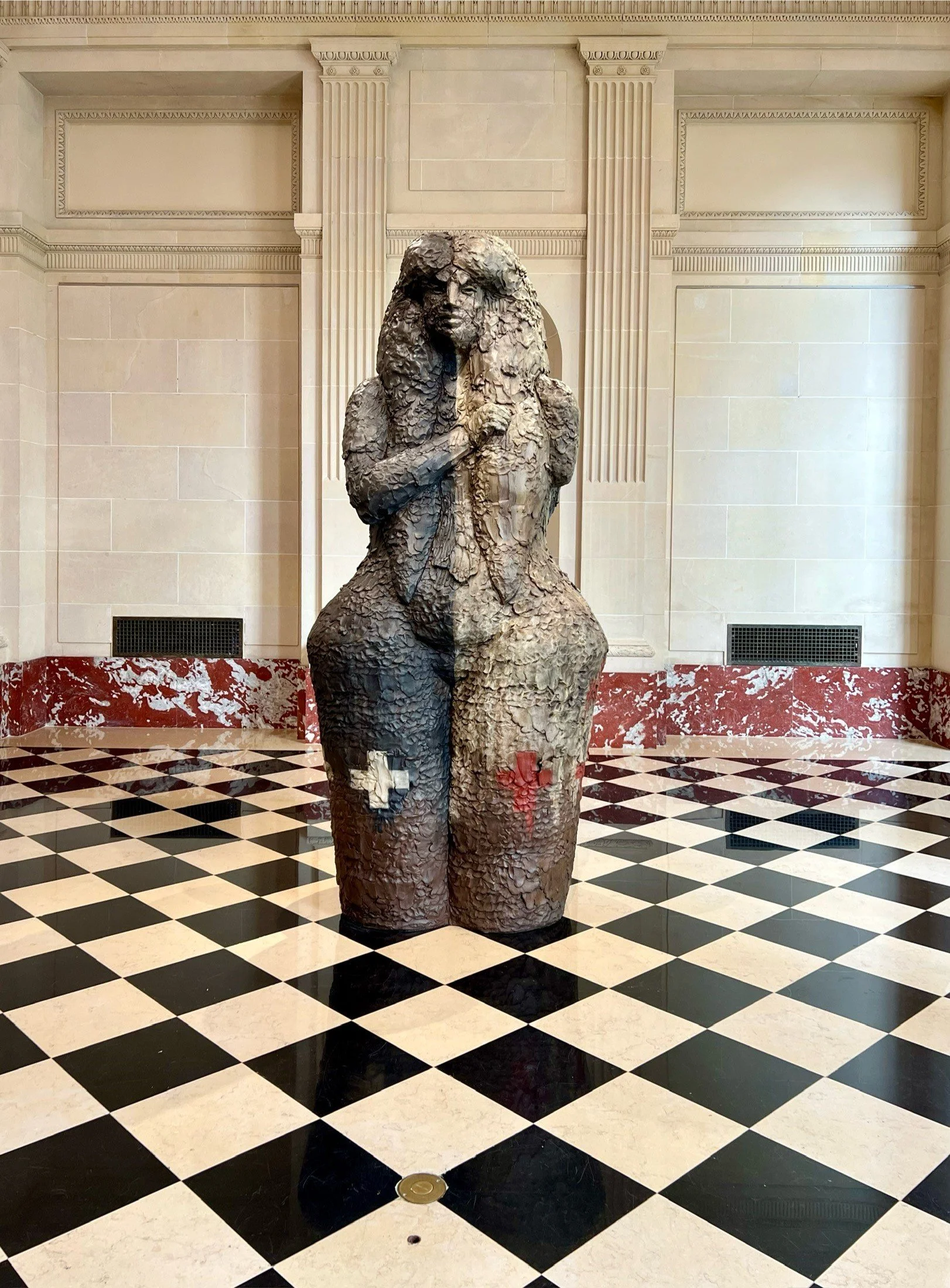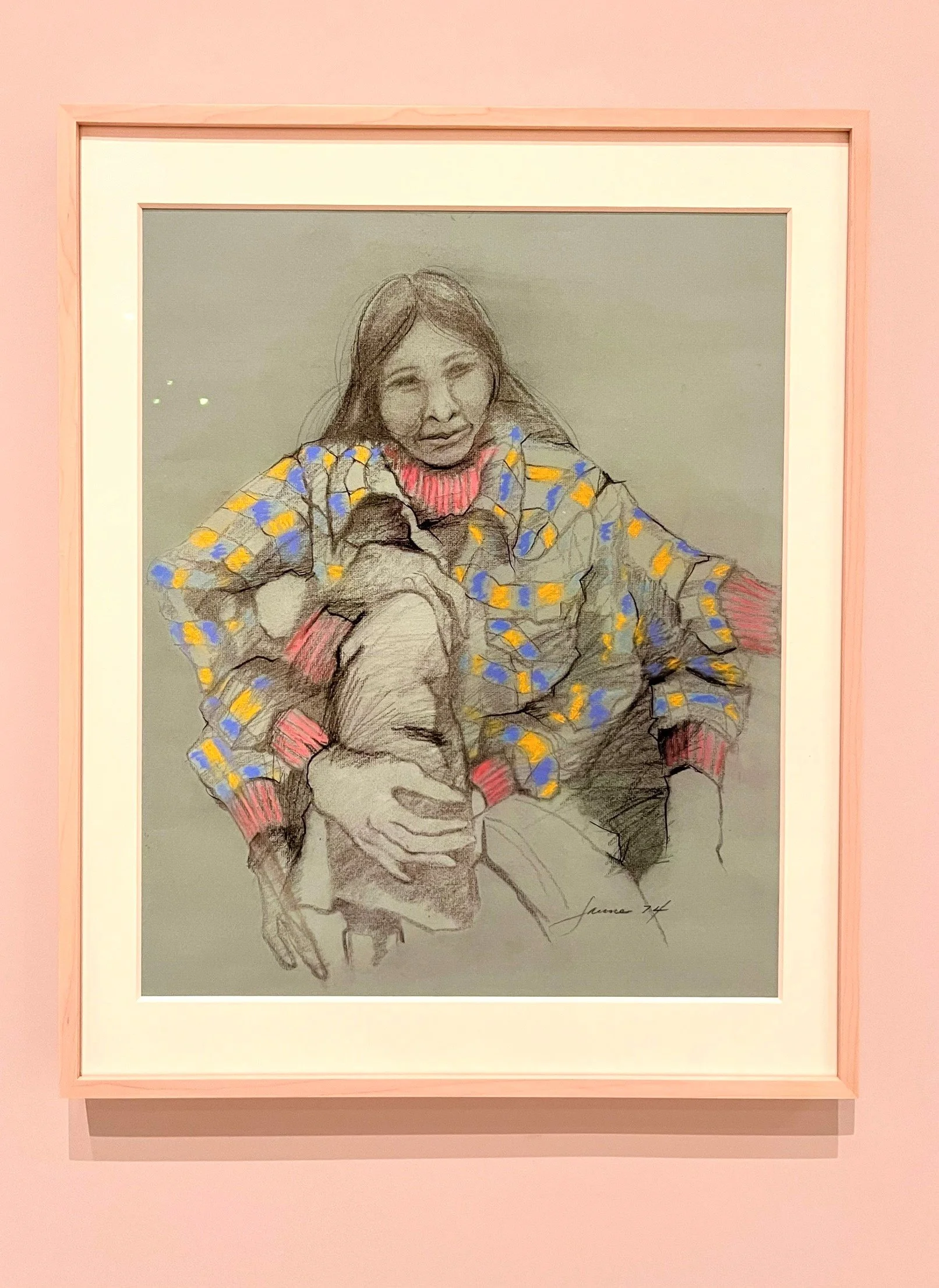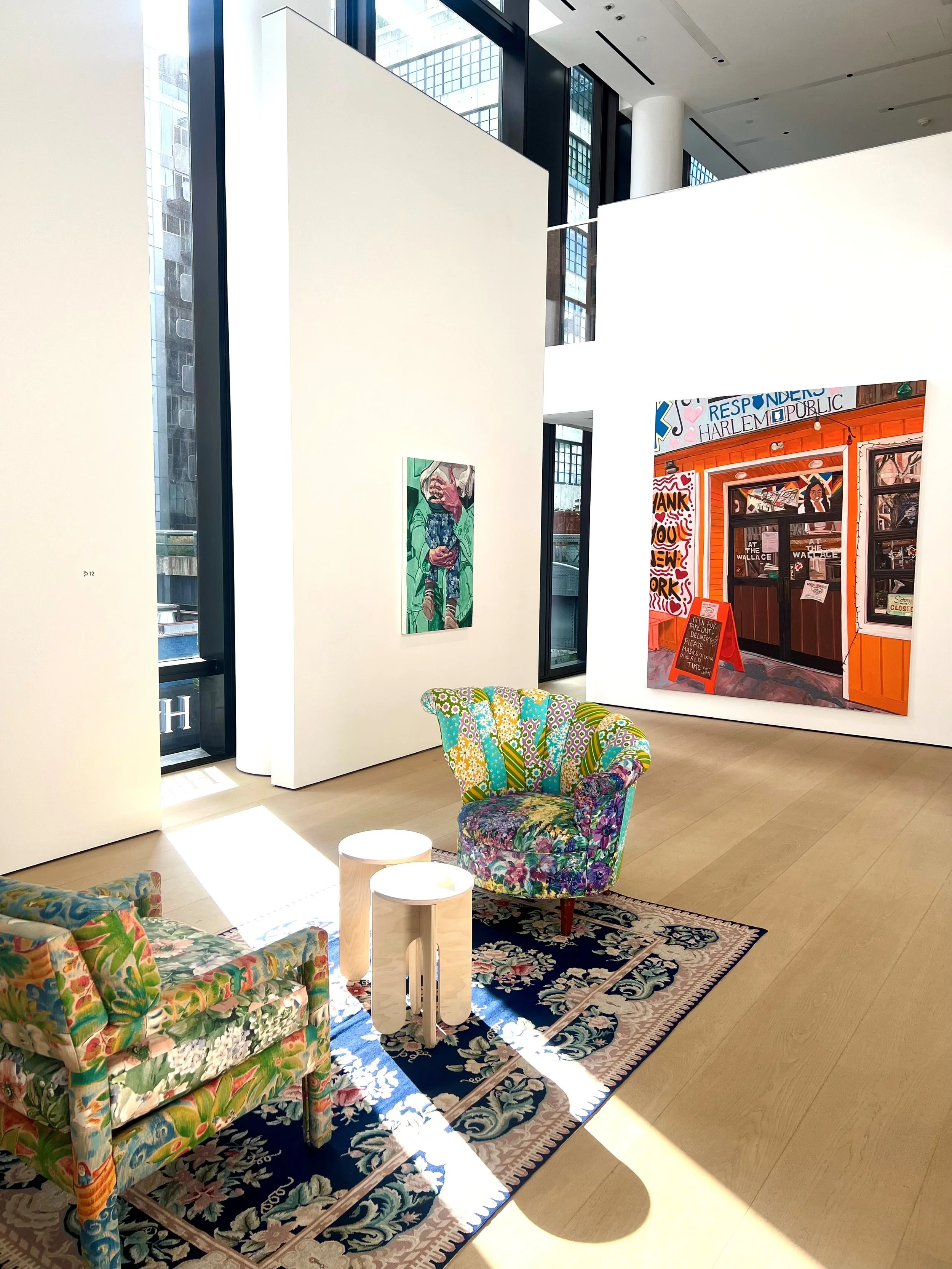The Groove 205 - Understanding the Rise of the Native American Artist
Welcome to the 205th issue of The Groove.
I am Maria Brito, an art advisor, curator, and author based in New York City.
If you haven't done so please subscribe here, to get The Groove in your inbox for free every Tuesday.
UNDERSTANDING THE RISE OF THE NATIVE AMERICAN ARTIST
Jeffrey Gibson’s installation at the US pavilion, Venice Biennale, 2024. Photo by Maria Brito.
Art history was shaped by white European men, who began codifying and editing it during the early Renaissance in Florence. New worlds were colonized, shaped, and then lost, yet for centuries the focus remained on white male artists, with only occasional mentions of women and people of color. This started to shift dramatically in the mid-20th century, when new critical perspectives emerged. Feminist scholars like Linda Nochlin questioned the exclusion of women from art history, while postcolonial thinkers like Edward Said challenged its Eurocentric biases.
When I founded my company in 2009, what drew me in most was the rising prominence of Black artists. At the time, their work could be found in a select few galleries and even more rarely in museum shows. Kara Walker, Mickalene Thomas, Mark Bradford, Kerry James Marshall, and Theaster Gates were at the forefront of a movement that by the late 2000s and early 2010s, helped ignite what would become a fervent interest in Black art. Jean-Michel Basquiat, who had come onto the scene three decades earlier, was an undeniable pioneer, but his career—though meteoric—felt tied to a different era. His legacy seemed rooted in the street art movement of the 1980s, with all the cultural excesses that defined that moment.
Now we are opening new frontiers. The recent surge of Native American artists gaining prominence in the US is a pivotal moment in both cultural representation and the dynamics of the art market. Long marginalized and often stereotyped, Native American artists are now receiving the recognition and platform they deserve, not just as cultural figures but as contemporary artists whose work resonates globally. This rise signals a deeper reckoning with the art world's colonial history, a shift in collector interests, and a broader recognition of the diversity and depth of American art.
Raven Halfmoon, The Guardians, 2024 at Salon94. Picture by Maria Brito.
About 14 years ago, I first encountered the work of Jeffrey Gibson, one of the most prominent Native American contemporary artists, at an experimental art fair in SoHo. At the time, he was represented by Marc Straus Gallery and was already creating his signature beaded punching bags, a nod to his Choctaw and Cherokee heritage. In 2010, finding a Native American artist in a contemporary art gallery or art fair was almost impossible. Now 52, Gibson has had a long and impressive career, with numerous museum solo shows, including at The New Museum in New York and The Institute of Contemporary Art in San Francisco. This year, he became the first Native American artist to represent the US at the Venice Biennale. Last week, it was announced that he will be co-represented by his long-standing gallery, Sikkema Jenkins, and mega-gallery Hauser & Wirth.
Also last week it was revealed that Apsáalooke/Crow artist Wendy Red Star is one of the 2024 recipients of the prestigious MacArthur Foundation grant, which awards $800,000 to each of the winners. She rose to prominence early in her career with her self-portrait photo series Four Seasons (2006), which satirized colonial perceptions of Native Americans. Red Star has continued to unpack prejudice, misinformation, and obscured histories through humor in her works.
Currently, there are two outstanding solo gallery exhibitions in Manhattan spotlighting Native American artists. Teresa Baker, known for her textile work, is featured downtown at Broadway Gallery (which I highlighted here), while sculptor Raven Halfmoon has a major exhibition uptown at Salon 94.
Jaune Quick-to-See Smith, Self-Portrait, 1974. Pastel, graphite and charcoal on paper. From her show “Memory Map” at the Whitney Museum in 2023. Picture by Maria Brito.
Last year, Jaune Quick-to-See Smith, a member of the Confederated Salish and Kootenai Tribes, had a solo show at the Whitney Museum. Her work is known for her politically charged critiques to colonialism and environmental destruction. “Memory Map” was a retrospective featuring her paintings, drawings, and prints, all of which address Native history, identity, and land rights. One of her paintings sold at auction in 2022 for $642,000; another one in 2023 for $571,000.
It’s evident that the art market is taking notice of this surge. Native American artists are beginning to command higher prices at galleries and auctions and are gaining attention from collectors, particularly those interested in socially relevant and culturally rich artwork.
This rise is shifting the dynamics of the art market in important ways. First, it diversifies the types of art that are seen as valuable investments, moving beyond the European canon and American art to include Native American voices. Second, it disrupts the tendency for Native art to be commodified solely as historical or decorative objects, recognizing contemporary Native art as a thriving, forward-thinking force. Third, it challenges collectors and museums to rethink their collection and acquisition strategies, putting a greater focus on artists with deep cultural roots and unique perspectives.
For the art market, this means new opportunities for collectors and institutions to engage with underrepresented voices and invest in a more inclusive future. More importantly, it signals a moment of cultural redress where Native American artists are finally given the platform, they have long deserved, enriching the American art scene and contributing to a global dialogue on culture and identity.
Show of The Week
Jordan Casteel’s Field of View, at the Hill Art Foundation
I thoroughly enjoyed Field of View, the exhibition of Jordan Casteel's paintings at the Hill Foundation in Chelsea. This show features figurative works that capture everyday scenes, still lifes, and landscapes from the past decade. The space has beautiful, natural light, and the exhibition is complemented by thoughtfully selected furniture, creating a warm and inviting atmosphere.
From The Archives
A creative idea is usually a risky one. It’s the one that hasn’t been tested. But as our brains resist change, if you want to be an original, you’ll have to take chances even if your conscious mind says no.
The biggest hindrance to creativity is a risk-averse attitude. This obviously applies equally to everyone regardless of whether they work in companies or not. Risk aversion kills creativity. Read here how to move past that.




